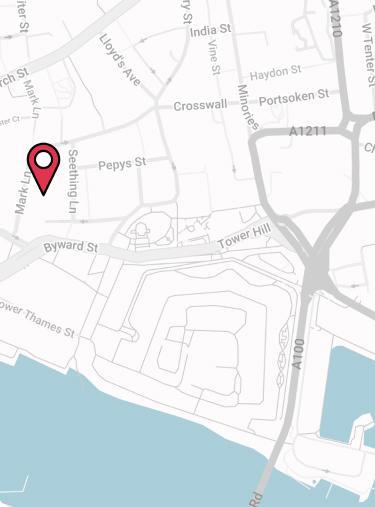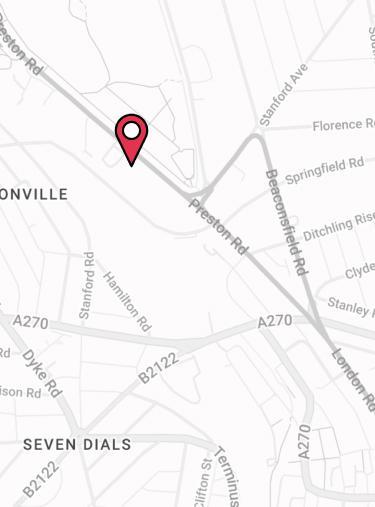Our top five financial tips for a prosperous 2017
Stop paying too much tax!
Most of us pay far more tax than we need to in the UK. The best way to reduce the bite that HMRC takes from our earnings every year is to take advantage of the numerous tax allowances that are available on pensions, savings and investments.
First stop: using your pension allowance
The UK’s pension regime may not be nearly as generous as it once was, but it still represents by far the most tax-efficient way in which to save for retirement or, more accurately, for when you turn 55 and gain full access to your pension savings.
Most of us can still contribute up to £40,000 (gross) to our pensions each year or the equivalent of our annual salary (whatever is lower). It’s a called a ‘gross’ contribution as this includes the value of any tax relief that you receive at your highest marginal rate.
Tapering top earners
The rules are different for those with ‘adjusted income’ of over £150,000 and a ‘threshold income’ of more than £110,000.
Since, the start of the 2016 tax year, new rules introduced act to taper the annual pension allowance of the UK’s highest earners £1 for every £2 of ‘adjusted income’ that someone enjoys over £150,000.
The maximum reduction in annual allowance is £30,000, which is reserved for those enjoying adjusted income of £210,000 a year or more.
If you’re in this position, the most you can now contribute to a pension, including the tax relief you’ll receive, is £10,000 a year.
If you’re a higher earner struggling to get a handle on how the new tapered allowance will impact you, our new Annual Allowance Calculator has been created especially for you.
High earners under threat
Making the most of the tax regime is especially important for the UK’s higher earners as those who enjoy total earnings of £122,000 or over now lose their entire income tax personal allowance of £11,000.
Since 2010, when these changes came into force, those with annual earnings of over £123,000 lose their entire personal allowance (£11,500 in the 2017 tax year) and are now required to pay their highest marginal rate of income tax on this part of their earnings.
In the 2017 tax year, this equates to an added tax bill of £5,175 for additional-rate taxpayers.
The new £20,000 a year ISA
In April 2017, the ISA limit rises to £20,000 which means that married couples can save up to £40,000 a year tax free (and more if they utilise their children’s allowances).
Don’t forget that the personal savings allowance grants £500 a year of tax-free interest to higher-rate tax payers and £1,000 to basic-rate payers – this means there’s little point using up your ISA allowances on cash, especially with interest rates locked at record lows.
Using your capital gains tax (CGT) and dividend allowances
Once you’ve made the most of your annual pension and ISA allowances, the next step is to think about utilising some of the other tax allowances Britons enjoy such as the annual capital gains tax allowance of £11,100 pa and the annual £5,000 dividend allowance.
There are numerous ways to make use of these allowances. For example, it could mean refocusing an investment portfolio toward growth returns and away from income-generating investments, which might be more profitably held in an ISA or a pension wrapper.
For higher-rate taxpayers who may be drawing an income from their investments and paying income tax on the money they receive, changing to taking regular lump sum payments would effectively cut their tax bill in half as CGT is now charged at just 20% for higher and additional-rate taxpayers.
Combining forces
Married couples who hold assets in joint names benefit from a combined annual CGT allowance. This means that a joint portfolio could realise gains of £22,200 a year without attracting CGT. It would also have nothing to pay on the first £10,000 of dividend income.
Bed & ISA investing
Utilising your annual CGT allowance means being organised enough to regularly sell part of your portfolio in order to realise any gains and claim your annual allowance. You can always reinvest once you’ve created a ‘trigger’ event like a disposal.
This is most effective when it forms part of a regular programme where assets are repurchased within an ISA (known as ‘bed & ISA’) or a SIPP each year. In both instances, the assets subsequently become immune to further income and capital gains tax.
CGT: sharing the wealth
As there’s no CGT liability on asset transfers between spouses or civil partners, in cases where a higher or additional-rate taxpayer is married to a lower-rate or non-taxpayer it can be worth transferring assets to them.
This is because they’ll attract less income tax (so long as the proceeds don’t push them up into the next tax bracket).
Tax-shelter products for higher earners
For more affluent investors or those who might run their own company there’s also the opportunity to benefit from the attractive tax reliefs offered by tax-shelter products such as venture capital trusts (VCTs) or enterprise investment schemes (EIS).
Venture capital trusts (VCTs) pay tax relief on investments of up to £200,000 a year while enterprise initiative schemes (EIS) offer relief on up to £1m a year in new investments.
Spring clean your pension in 2017
In 2016, our Wealth & Protection Survey revealed that more than 20% of UK investors have no idea how much their pension might be worth. This needs to change if Britons are to improve their retirement prospects.
Bringing it all together
These days, the average Briton has something like 11 jobs over their lifetime. This means that some of us could have accumulated a dozen or more different pension contract over the years. All with different charges, different terms and different investment options.
Millions of Britons continue to pay high charges on older-style personal pension contracts or are stuck in work-related schemes that seriously limit their investment choices. Meanwhile, there’s currently around £3 billion languishing in the two million or so ‘lost’ pensions that the UK pension industry knows about.
All this means that a great swathe of Britons could be far better off in retirement if they take the time to consolidate their various pension savings into one modern, streamlined pension portfolio.
Record final salary pension transfer values
Depending on when you started work, some of your old pensions could even be ‘gold-plated’ final salary pension schemes, which are currently worth more in terms of transfer values than at any point in their history.
There are some 3.7 million or so Britons who are lucky enough to own final salary pension rights of some kind and, thanks to UK government gilt yields hitting record lows, the final salary transfer values now on offer from such schemes have hit the roof. For those with significant years of service, the sums now being offered by many hard-pressed schemes can be genuinely life changing.
Partial transfers: the best of both worlds?
Too few people realise that pension transfers aren’t always a question of ‘all or nothing’. For many, a partial transfer could offer the ‘best of both worlds’.
For final salary scheme members, a partial transfer means they can set the level of guaranteed income they’ll receive for life from their employer. But by transferring the balance of their pension pot to a personal pension scheme they can enjoy the added flexibility of income and lump sum withdrawals that comes with modern income drawdown arrangements while creating a tax-free inheritance for their beneficiaries – something that can’t be done with a final salary scheme.
There are also plenty of occasions where money purchase scheme members – such as auto enrolment or GPP scheme members – might also benefit from a partial transfer.
Make use of ‘carry forward’ (while you still can)
The carry forward rules allow you to make use of any previously unused annual pension allowance from the preceding three tax years (starting with the tax year three years ago) and to receive tax relief on these contributions at your highest marginal rate.
It’s especially important for higher and additional-rate taxpayers who may have seen their annual pension allowance reduced by the new taper to make use of this valuable option before their ‘window’ closes.
Why the clock is ticking on carry forward
The pension annual allowance was still set at £50,000 in the 2013/14 tax year and it subsequently declined to £40,000 in the 2014/15 and 2015/16 tax years.
This means that, assuming you qualify for the full £40,000 annual allowance, you could potentially invest up to £170,000 in your pension in the 2016 tax year (assuming you didn’t use any of your allowance in the previous three tax years). Those subject to the new tapered allowance, could still invest up to £130,000 on the same basis, on top of their newly tapered allowance for the 2016/17 tax year.
But the clock is ticking on carry forward, especially for higher earners, as the onset of the 2017 tax year will mean that the 2016 tax year becomes one of the three previous years of consideration. Consequently, you’ll lose the £50,000 allowance from the 2013 tax year. It will be replaced by your new tapered allowance for the 2016/17 tax year.
If you’d like to work out how much you could potentially contribute to your pension via carry forward, try our new Pension Carry Forward Calculator.
Make a date with LISA
The boundary between ISAs and pensions looks set to blur further in 2017 with the introduction of lifetime ISAs, or LISAs, from 6 April.
The government introduced LISAs with two main goals in mind:
- To encourage saving for retirement; and to
- Make it easier for first-time buyers to save enough to get on the property ladder.
LISAs are only available to those aged between 18 and 40, so anyone born before 7 April 1977 misses out.
The LISA limits
You can only save £4,000 per year into a LISA, but the government will then top up your contributions by 25% every year until your 50th birthday. This means an 18-year-old opening a LISA in 2017 could net a potential £1,000 per year from the government for 32 years.
While there are many positives for first-time buyers using a LISA to save for a house deposit, don’t mistake a LISA as being an alternative to a pension.
LISA’s shortcomings
Barring exceptional circumstances, you’ll have to wait until you’re 60 to access the funds in your LISA or risk hefty charges. This compares poorly with a personal pension where you can access your savings – without penalty – from age 55.
Any savings into a LISA could also have an impact on your entitlement to benefits. If you’re an employee, you’ll miss out on any employer contributions to your pension if you choose to save for retirement solely via a LISA.
Meanwhile, even with the 25% bonus, higher and additional-rate taxpayers will be significantly worse off saving into a LISA over a pension due to the generous tax relief that’s on offer.
Even so, LISAs are a valuable additional investment for those who’ve already optimised their pension contributions and are still young enough to open a LISA.
Stop using price comparison sites for life insurance…
Although they offer a number of attractions, price comparison websites (PCWs) aren’t the best option when it comes to complex, long-term financial products such as income protection or life insurance.
Comparison sites work well when it comes to buying things like car insurance because there are comparatively few policy options. But when you’re talking about making a decision that will have a major impact on your financial health and wellbeing and that of your family, a PCW isn’t the best way to go.
Home field advantage…
Advisers know insurers and their policies inside out – in a way that an algorithm behind a PCW can’t. They know about the special deals and added extras that are generally missed by PCWs, which also tend to omit medical underwriting.
This means you risk finding a swathe of exclusions on a policy when you come to claim, purely because no one’s taken a detailed look at your medical history.
Most insurance brokers don’t charge a fee for their services and the policies cost just the same as if you’d gone direct to the insurer.
That means you benefit from their knowledge for free and you can come away safe in the knowledge that you’ve bought a product best suited to your needs.
And, of course, if you buy without advice and find the cover isn’t suitable when you need it the most, there’s no one to blame but yourself.
Take a look at your likely inheritance tax bill
The nil-rate band for inheritance tax (IHT) has been locked at £325,000 since April 2009 but UK property prices have jumped by more than a third in this period. This has delivered IHT bills to more than 40,000 UK families in 2016 and this number is expected to grow more than 50% in the next three years alone.
House price crunch
Within the next decade or so, there’ll be at least a million homes in London worth £1m with another half million such properties in the South and East of England alone.
This means that a great number of British families will need to think about estate planning in the coming years or they could risk losing a treasured family home and its contents to IHT.
The introduction of a new main residence allowance for IHT in April of 2017 is a great opportunity for Britons to tot up their current inheritance tax liability and start taking action.
Too few people know that ISAs aren’t exempt from IHT and currently the inheritance tax liability on the UK’s ISA investments runs to tens of billions.
Five good ways to safeguard your family’s wealth from the taxman after you’re gone:
- Make sure your Will is up to date and that you and your spouse have the most appropriate arrangements in place (often separate Wills will be far more tax efficient);
- Reduce your estate by gifting assets to your beneficiaries while you’re still alive (make sure to check your IHT gift allowances);
- Use your pension to help reduce your inheritance tax bill;
- Consider ‘pre-funding’ your IHT liability with life insurance; and
- Make use of IHT-exempt assets including the new IHT-free ISAs.
Inheritance tax is a complex and nuanced area, that’s why we offer some of the most detailed guidance on inheritance tax anywhere on the web.
Our comprehensive inheritance tax pages also include our unique inheritance tax calculator, which is the first of its kind in the UK to include the new main residence allowance when totting up the inheritance tax liability on your estate.
Contact Us
125-135 Preston Road
Brighton
BN1 6AF
Cookies
Drewberry™ uses cookies to offer you the best experience online. By continuing to use our website you agree to the use of cookies including for ad personalization.
If you would like to know more about cookies and how to manage them please view our privacy & cookie policy.



